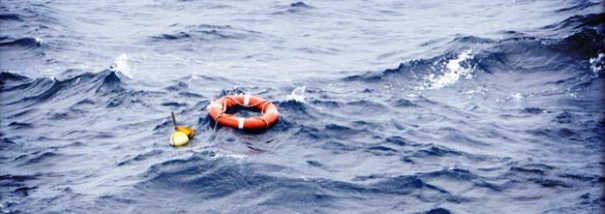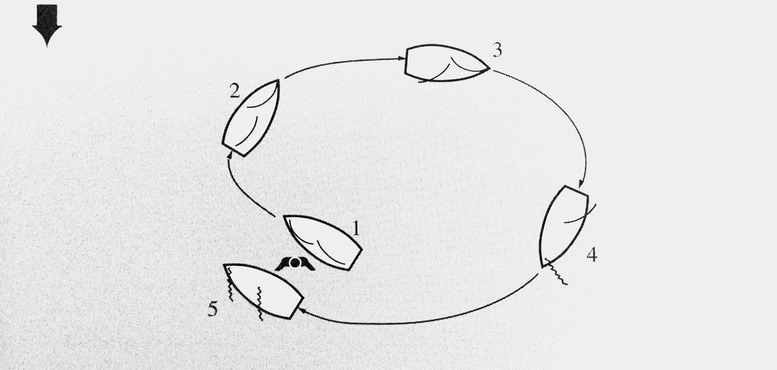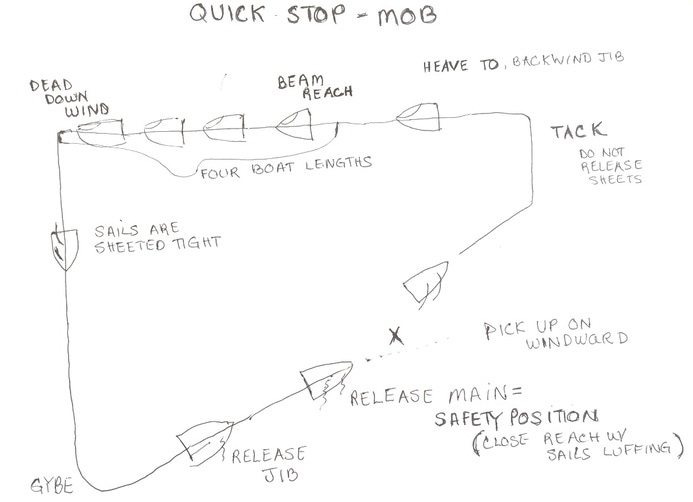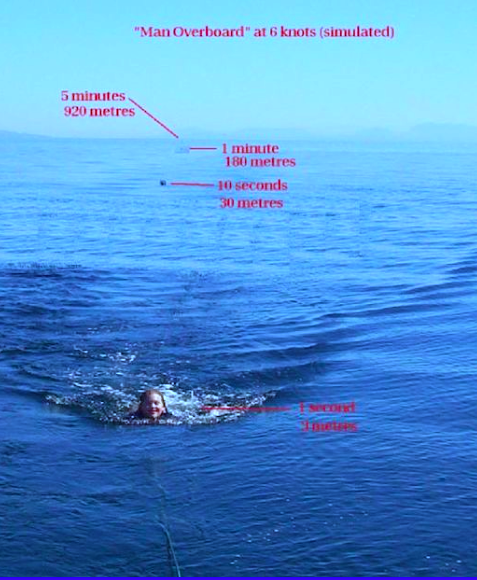Man overboard Objectives - turn the boat around - stay with the person - RETRIEVE the person
Nothing strikes more fear on a boat than the shout of "Man Overboard." That's why we practice and practice and practice the drill until it becomes second nature. Quick stop is the preferred method for rescuing crew overboard on Celtic Song. In this lesson you will learn:
- Steps to take when a crew member falls overboard
- Course to sail to get back to the victim as quickly and safely as possible
- Responsibilities of crew members
- Lifesaving gear aboard the boat
man overboard
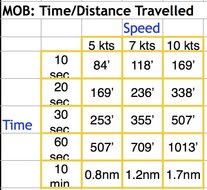 Distance MOB travels at speed
Distance MOB travels at speed
When someone goes overboard, the only goal is to get that person back on board as quickly and safely as possible. Your job: Turn the boat around. If you have enough crew, follow these American Sailing Association recommendations:
Y - T - P - S - C
Y - T - P - S - C
- YELL to alert crew
- THROW horseshoe buoy or other buoyant material to victim
- POINT to keep victim in sight
- SET the MOB button on the chart plotter located just inside the companionway to starboard. That sets a waypoint.
- CALL on VHF 16 if you need assistance
- Victim falls overboard. If there are enough crew on board, Helm assigns them to follow Y - T - P - S - C
- Head up and tack without releasing the jib sheet. This will backwind the jib and slow the boat
- Bear away on a beam reach for three to four boat lengths
- Jibe and line up a little downwind of the victim. Let the sails luff
- Return to the victim on a close reach with the sail luffing. This is the safety position. Recover the victim on the windward side of the boat using the swim ladder, if possible, or the life sling mounted on the stern pulpit. You will want to be a close reach so you can harden up the sails and maintain maneuverability.
Diane's narrative
Tack, leaving jib backwinded in heave-to position; sail past the victim on a beam reach, leaving 3 to 4 boat lengths before turning downwind, jibing and then heading up on a close reach, returning to the victim in the safety position (close reach with your sails luffing).
The safety position allows you to tighten sails and gain control of the boat in case you're too far away from the MOB.
Most important is to turn the boat around immediately and stay with the victim. Throw whatever is available in the water (cushions, life ring, life sling, etc.) to help mark the spot. Don't be afraid to turn on the engine, but don't get too close to the victim with the propeller. Beware of lines in the water. Retrieve the MOB from the windward side of the boat.
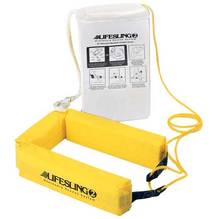
Using the Life Sling
Turn the boat around; stay with the victim. Throw the life sling in the water and circle around the victim. If you are sailing down wind, pull the mainsail in before jibing. Do not adjust the jib lines. The sails will automatically go into a heave to position This will slow the boat down.
Once the MOB has hold of the life sling, heave to and pull the person to the boat. Secure the sails. Rig the topping lift to the electric halyard winch and attach the shackle to the person to pull them out of the water.
If you need to turn the engine on to maneuver be careful the prop does not make contact with the person in the water.
Turn the boat around; stay with the victim. Throw the life sling in the water and circle around the victim. If you are sailing down wind, pull the mainsail in before jibing. Do not adjust the jib lines. The sails will automatically go into a heave to position This will slow the boat down.
Once the MOB has hold of the life sling, heave to and pull the person to the boat. Secure the sails. Rig the topping lift to the electric halyard winch and attach the shackle to the person to pull them out of the water.
If you need to turn the engine on to maneuver be careful the prop does not make contact with the person in the water.
Final Thought
This simulated photo from a Bruce Brown Survival at Sea presentation makes the point that you need to act quickly when someone falls overboard. Or as Diane says, "Turn the damn boat around now!"

